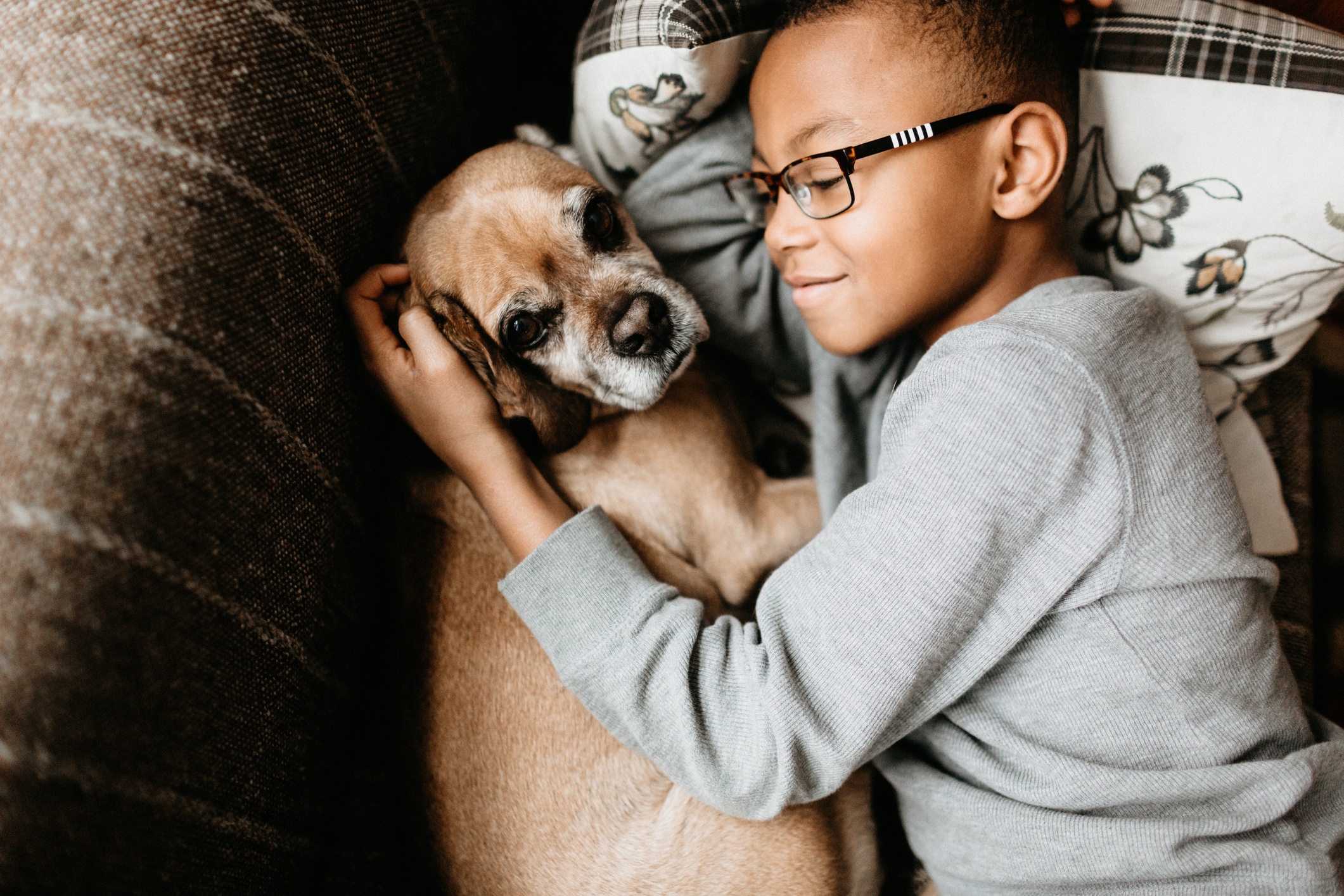Service dogs are invaluable tools that help people with disabilities lead more independent lives. With proper training, a service dog can assist with specific disabilities involving a loss of physical mobility and can alert the owners who depend on them to an onset of serious conditions like narcolepsy, seizures or migraines.
In order for a dog to work as a service animal, both the animal and the owner must go through extensive training so the dog can be housebroken, kept under control and stay well-behaved at all times. While they’re capable of learning a variety of skills, each individual dog is trained to assist with a certain function best suited to aid their owner.
Service dogs must be trained to ignore all distractions to focus solely on the needs of their owner. Training can be done by a professional or at home, but dedication to thorough training is always critical to a service animal’s success.
What is a service dog?
Often confused with therapy dogs, the title of “service animal” is limited to dogs that are “trained to perform a task directly related to a person’s disability,” according to the Americans with Disabilities Act (ADA). For example, a service dog may remind a person with depression or diabetes to take medicine at a specific time or guide a person away from stressors or to safety when under duress. On the other hand, a therapy dog may provide comfort to a person during an anxiety attack.
What breed of dog makes good service dogs?
For service dogs, there are no limitations on what breed or size dog can enter the training process. However, certain characteristics make particular breeds a better fit for a given disability.
Labradors and golden retrievers are some of the most commonly used breeds for guide and mobility dogs because of their size, strength and trainability while poodles are a great choice for psychiatric support. Standard poodles also have a hypoallergenic coat and a low shedding rate, making them a perfect fit for anyone with allergies. Smaller breeds, such as toy poodles and corgis, can be used for individuals seeking medical alert. What smaller breeds lack in physical strength, they make up for in convenience. A small dog is easier to travel with and to control in a crowd.
What qualities should a service dog have?
In order for a dog to be properly trained, you’ll want to consider its health, age and behavioral patterns. The more characteristics they have from this list, the easier they may be to train:
- Willing to follow owners.
- Calm and friendly.
- Alert.
- Well-socialized.
- Nonreactive to public and strangers.
- Quick learner.
- Able to retain information.
- Aims to please.
How long does it take to train a service dog?
While there are no specific regulations regarding service dog training in the U.S., international standards state that proper training can take almost two years, depending on the breed and difficulty of tasks required. In the U.S., there is no defined requirement, but it’s highly recommended that training time involves 120 hours over the course of six months, with 30 hours of public access skills training.
Service dog training can be done by a reputable trainer or by the owner in the comfort of their own home. If the time commitment can be guaranteed, training at home allows the owner to strengthen the bond with their service animal.
If choosing to train by yourself, less complex tasks should be taught first. Establishing the fundamentals of service dog commands, such as “come,” “sit,” “stay,” “lie down” and “heel” should be the first step. Secondly, assess the dog’s ability to follow those commands in a variety of environments to ensure they can ignore distractions. Once they show the ability to consistently follow commands 90 percent of the time with the first command, they may advance to tasks specific to the owner’s medical needs.
When a dog is able to fulfill the needs of the owner, it must also be able to pass a public service test. It is critical that a service dog is able to perform in new environments under a variety of unknown circumstances. They must not show any sign of aggressive behaviors, avoid offerings of food or physical affection and remain calm while in public.
How much does it cost to train a service dog?
If training at home is not working for the owner and dog, hiring a professional costs an average of $150 to $250 an hour for a recommended 120 hours of training. Consult with Assistance Dogs International to find a reputable trainer. There’s no guarantee your animal will become a qualified service dog within that time frame, so be sure to find a reputable trainer, as proper training can cost an average of $24,000 for the full 120 hours of intensive training.
What can a service dog do?
Each service dog is specifically trained to their owner’s needs and medical condition. These are some of the most common tasks performed by service dogs:
- Assist with household functions, such as opening and closing doors, drawers and cabinets and turning lights on and off.
- Assist with moving limbs to properly sit in a wheelchair, to sit upright or to put on or take off clothing.
- Provide stability.
- Call emergency personnel.
- Alert to symptoms, such as migraines or seizures.
- Seek help on command.
- Retrieve medication.
- Locate a safe place when their owner is disoriented.
- Guide owners away from stressful situations or take measures to prevent anxiety attacks.
- Detect harmful allergens and blood sugar levels.
Each dog will perform different commands, and some may not be able to perform all commands but rather only those necessary to assist their owner’s particular disability.
How can you identify a qualified service dog?
There is no universal certification or training for service dogs, making the identification of one a challenge. According to Section 35.136 of the ADA regarding service animals, a public entity is restricted from asking about the nature or extent of a person’s disability. They also may not demand or request documentation of a dog’s certification or training.
To ensure that an animal is a proper service dog and not a pet, a public entity is allowed to ask two distinct questions if the services are unclear:
- Is the animal required because of a disability?
- What task is the animal trained to perform?
Service dogs are trained to be desensitized to distractions and to put their owner first; they should not be treated as pets when they are on the job. To limit distractions from approaching strangers, many owners choose to have their service animals wear a vest. Others prefer to keep their disability private. Vest and identification cards are not required in the U.S. However, registering your dog and having proper identification may eliminate any uncomfortable situations you may face in public places, like restaurants or hotels.
As a service dog owner, know your rights under the ADA and be comfortable demanding those rights. Your rights include being allowed to have your trained service animal with you in public spaces, and you are under no obligation to share information about your disability other than to state, “Yes, my dog is needed for a disability, and he is trained to perform this specific task.”
While the ADA covers your right to have a service dog in public places when your feet are on the ground, the Air Carrier Access Act (ACAA) covers your rights while in the air. To avoid confrontation while traveling with your animals, it is recommended to have a letter from your doctor, as well a harness or vest on your dog for easy identification.
With a wide variety of breeds being used as service dogs, it’s difficult to identify a properly trained dog. Over the past few years, there has been an increase of people calling their dog a service animal so they can have access to public places. To avoid any issues, a service dog registration card can be obtained for your animal by numerous companies, but there is no federal bureau for mandatory registration. Each airline is different, so call ahead to make sure you have all required documentation and alert them that you will have an animal on board.
The ACAA guarantees your right to travel with your service dog in the cabin free of charge, but be warned that dogs may have difficulty while in flight, and it’s your responsibility to keep them in control. Plan extra time when traveling with a service dog to allow for the additional security measures put in place, as both you and your dog will be screened. To allow for more discreet communication with Transportation Security Administration employees, you may register for a TSA Disability Notification card through the administration’s website. If traveling outside the U.S., you can view guidelines for export requirements for other countries on the U.S. Department of Agriculture’s page, as policies vary widely depending on your destination.





